To accommodate the rising number of projects in the near future, construction companies everywhere are looking to transform the way they work—from project planning to scheduling and even on-site execution.
In fact, a scaffolding—part of the construction industry—report found that 85% of surveyed scaffolding companies have already deployed digital solutions to boost operational efficiency. And they prioritized industry-specific software adoption.
While there’s a plethora of construction management software to digitize construction processes, like CAD software or asset management tools, they are disparate platforms.
A better solution is an all-encompassing project management software that’s robust enough to manage critical aspects of construction projects.
Enter Jira. You can use Jira for construction project management.
In fact, many construction firms count on Jira or integration with Jira to manage their projects. Jira’s capabilities like real-time collaboration make it a sturdy bridge between the back-end office and job sites.
Continue reading to learn how you can successfully manage construction projects and their challenges using Jira.
Jira: An Adaptable Construction Project Management Solution
Though Jira was first created as an issue-tracking software, it has now evolved into a powerful construction project management solution.
This is down to Jira’s easy-to-master features like customizability and integration. With third-party apps and APIs, you can tailor Jira to suit your construction company and projects.
Besides that, its real-time communication and seamless scalability mean that Jira allows you to manage construction projects of any size and type, now and in the future.
Next, discover how these features (and more) can help you overcome common construction project challenges.
Overcoming Construction Project Challenges Using Jira
Challenges are inevitable in construction projects, or any other project for that matter. But if they’re left unsolved, your projects can be stalled and vulnerable to scope creep and cost overruns, or they can be shelved altogether!
Below, we’ve listed the usual challenges that crop up in various construction projects, as well as how you can take advantage of Jira to tackle them.
Challenge #1: Too Many Hidden Tasks
Let’s face it, construction projects include a wide variety of activities, many of which are unplanned requirements or change requests. These “hidden tasks” are the biggest culprits behind delayed schedules, or worse, they may affect the safety of workers. Inexperienced project managers may even miss out on administrative tasks (e.g., obtaining a permit from the municipal council). Unfortunately, this can hinder the smooth progress of your construction project.
For example, maybe you’ve been commissioned for a façade renovation (focusing on a paint job) for an office building. But this task won’t just require some paint and brushes. You must also consider erecting scaffolding, providing your staff with safety equipment, laying on a tarp, etc.
Solution #1: Hierarchical and Visual Project Planning
That’s why it’s important to divide your project into more manageable tasks, following a hierarchical order.
Sounds familiar? Yes, we’re talking about Work Breakdown Structure (WBS), the key element of a Gantt chart. It’s also one of the most critical tools in any construction project. It was first used on large construction sites like the Hoover Dam and the interstate highway network in America.
In Jira, you can track major work packages or stages through Epics, which will be displayed on the Roadmap. Epics are larger bodies of work that split the entire project into smaller, manageable tasks.
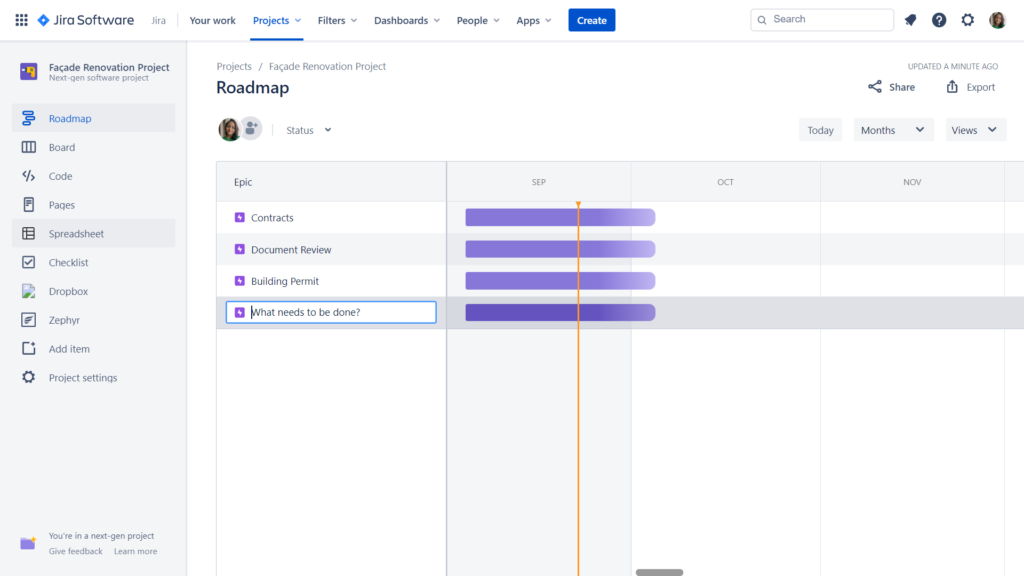
But remember that Epics represent high-level work management. The next step is to break them down even further into smaller tasks, also referred to as issues.
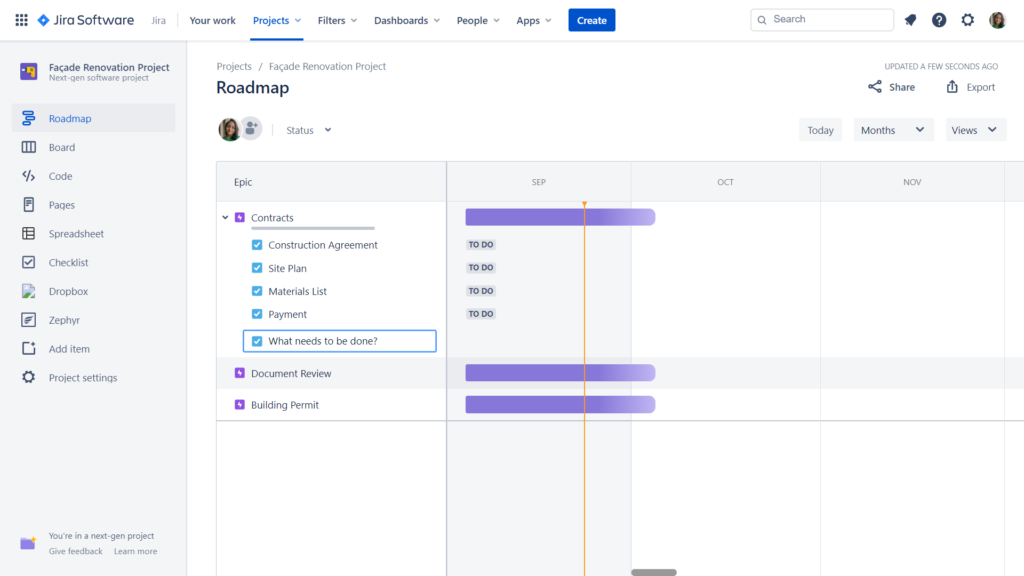
Once you have all the issues laid out on the project plan, it’s important to visualize the relationships between these tasks to coordinate work in a logical order. For instance, which task is dependent on others, or which one is a potential blocker.
That being said, Jira lacks task visualization capabilities. Fortunately, there’s a third-party app like WBS Gantt-Chart for Jira with WBS and task dependency management capabilities.
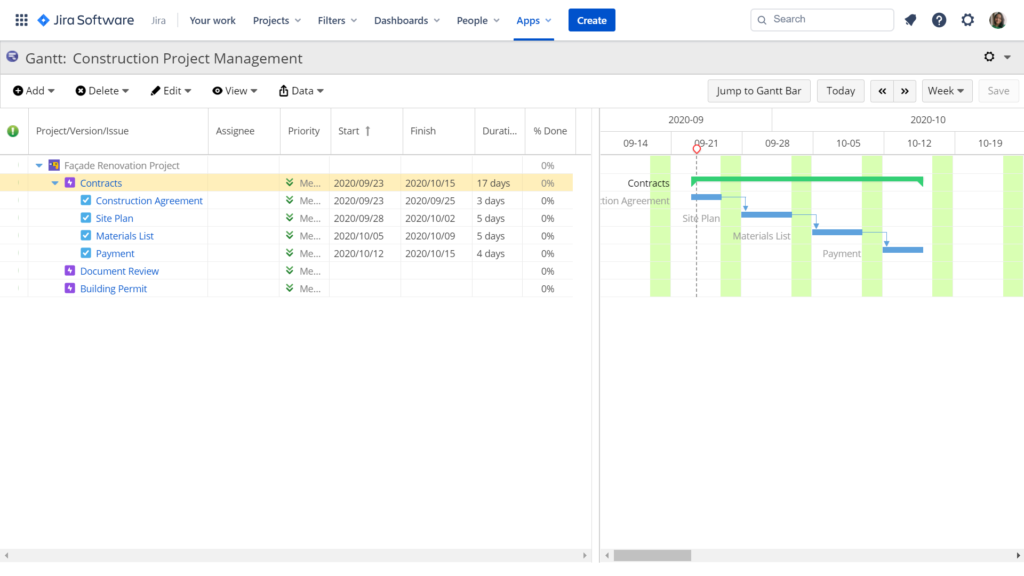
As shown above, since tasks are broken down and scheduled in an organized manner, nothing gets missed.
Read More: How to Visualize Dependencies in Jira
Challenge #2: Broken Communication
Industry research by PlanGrid found that almost $17 billion was wasted on construction project rework in 2018 due to poor communication.
Poor communication stems from siloed functions with legacy communication methods like paper-based status updates or email-based request management. This can affect inventory levels, your company’s profit margins, and your relationship with customers.
For example, maybe your foreman made some last-minute changes to the materials list through a physical Change Order Form that ended up not being reflected accurately in the customer’s invoice.
Solution #2: Digitizing Progress Tracking
Digitizing construction project management ensures that everyone is communicating efficiently and knows the latest project performance. You can do that using Jira’s comment thread and its status workflow.
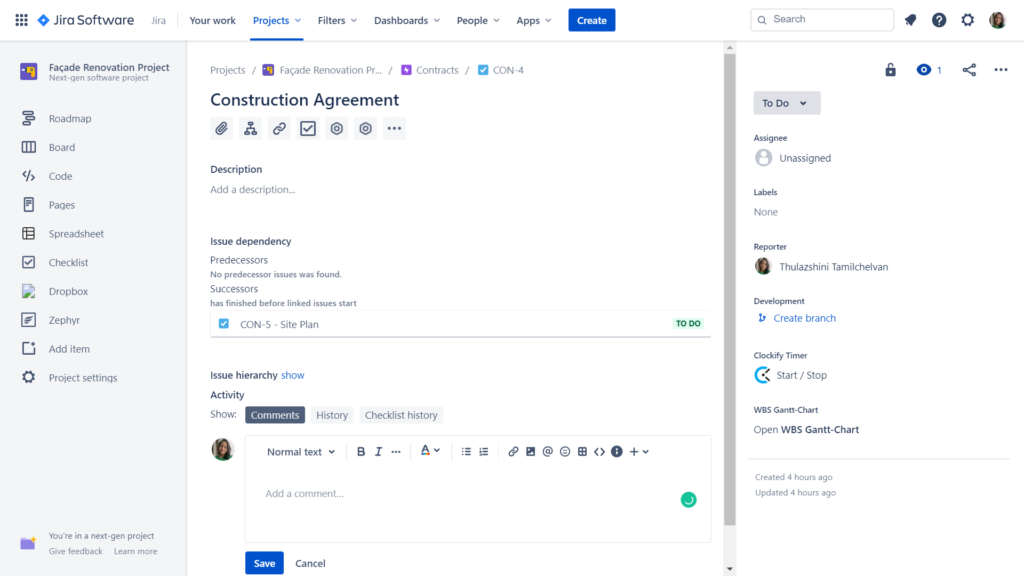
Using the same Gantt chart app and digital time tracking through Jira, you can accurately estimate task progress and see how close you’re moving to the desired project milestone.
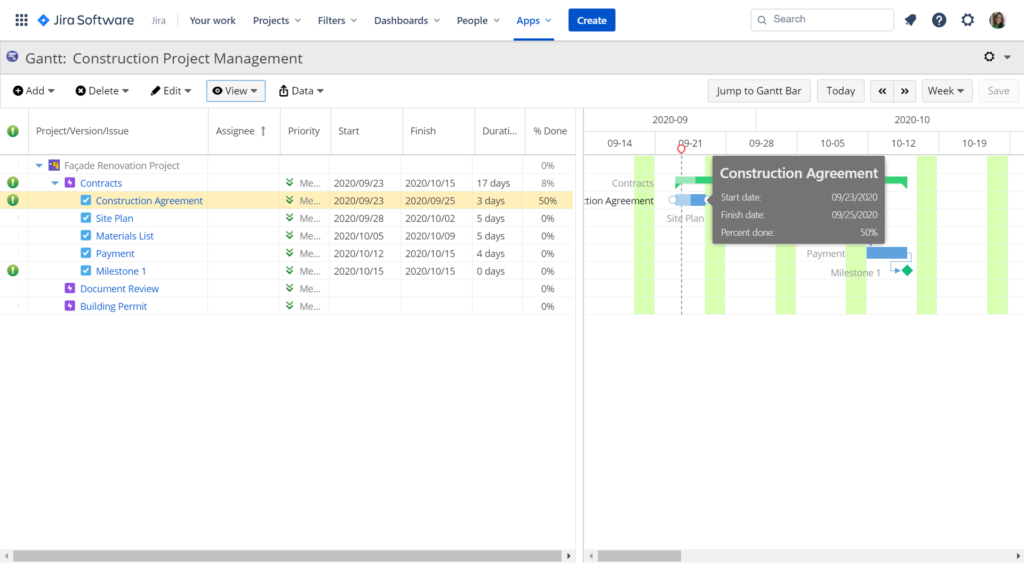
Challenge #3: Unrealistic Risk Forecasting
Poor project planning without considering risk forecasts can affect your construction project scheduling. And when you waste time, you waste money.
For instance, perhaps you promised a customer that the façade renovation job could be completed in a month. But you failed to consider risks like weather disruptions or labor shortages.
Solution #3: Smart Risk Management
In Jira, you can accomplish smart resource risk management through the Gantt chart add-on. Note that resources here refer to team members.
Its resource monitoring and allocation capability will instantly notify you should there be possible issues with your staff’s workload. All you need to do is reassign tasks until no one is overloaded with work.
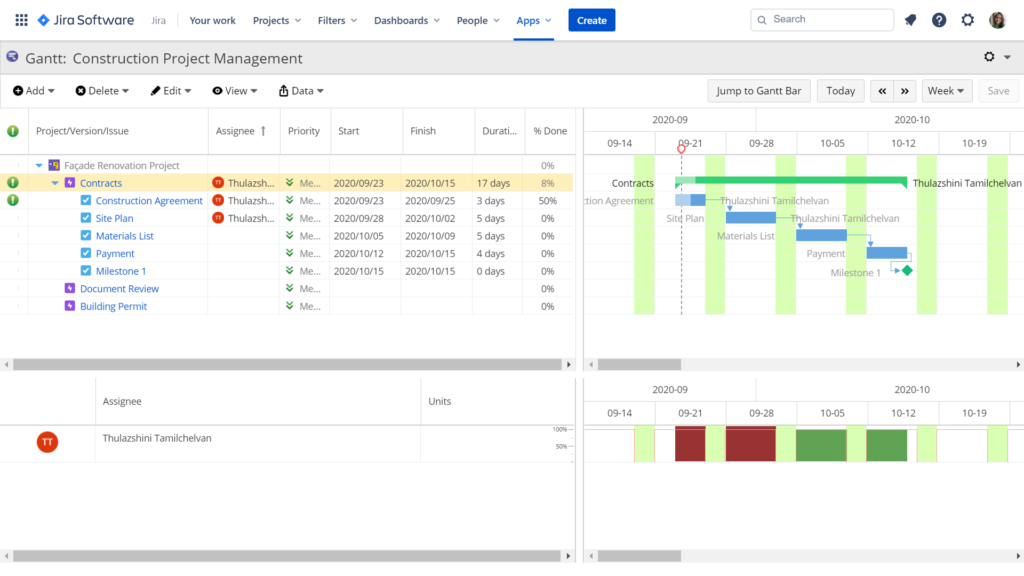
The app also has an automatic scheduling capability that auto-calculates the project timeline based on changes like task duration and dependencies. Hence, estimating the new project completion timeline in the event of disruption becomes easier.
Challenge #4: Outdated Document Management
“Now, where did I put that RFI?”
Unfortunately, this situation may be all too common if you still manage important documentation via outdated methods (hint: dusty folders, dated Excel files, and long email threads).
Remember what we said about digitizing progress tracking? Well, you should also digitize document management to help boost productivity and save costs.
Solution #4: Single Source of Truth (SSOT)
A Single Source of Truth (SSOT) is the accessible central information repository of your company. Everyone involved can then make data-backed decisions based on the latest construction project updates.
You can use Jira alongside Confluence – an online knowledge collaboration tool – to digitize and organize all your documents and templates.
For example, you can prepare an RFI template on Confluence that team members can use instantly. Updates to a project are then visible to everyone involved in that particular project.
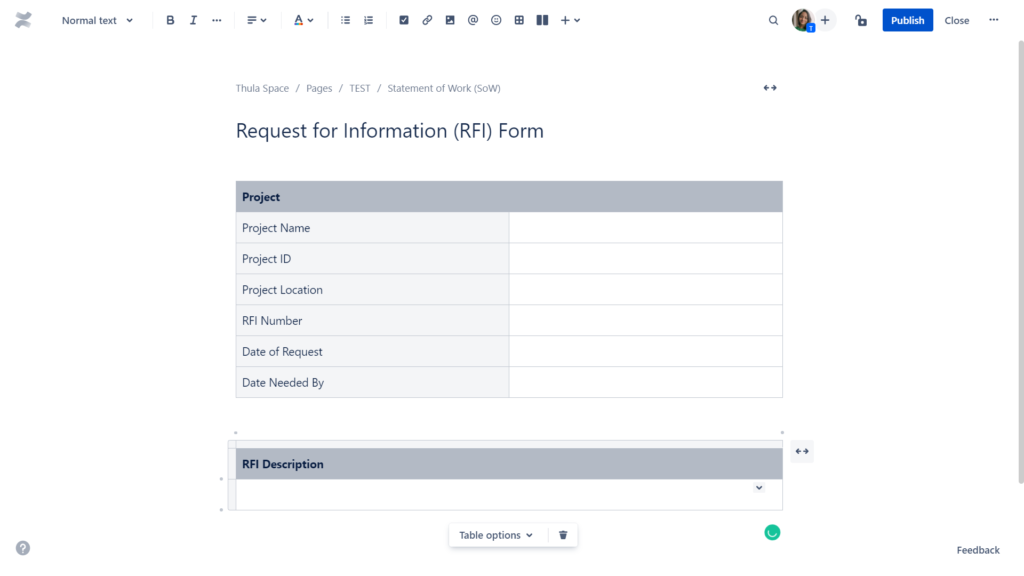
On the other hand, if you still rely on external files like Excel to do your tasks, consider embedding them right within the appropriate Jira issue. Or you can take it one step further and create an Excel file right within a Jira issue. With the help of Excel-like Tables for Jira, you can access the powerful features of Excel (e.g., tables, formulas, formatting) in each Jira issue. So, no spreadsheet file is stuck behind externally hosted folders.
Challenge #5: Managing Work Remotely
The impact of COVID-19 has pushed construction project managers like yourself to pivot from working on-site to working remotely.
In fact, experts believe that tele-building is here to stay even after the pandemic period.
Solution #5: Complete Online Collaboration
This means that keeping workers and projects connected now and in the future with a scalable online solution like Jira is vital.
Team members involved can have access to projects even through their phones – Jira Mobile – which is perfect when on-site presence is required.
You can even scale to a Jira Server or Data Center should you require enterprise-level capabilities and project control.
Construction Project Management Done Right with Jira
Whether you’re using it to digitize your entire construction project process or to keep your workers connected at a job site, Jira is built with critical capabilities.
With the addition of a Jira Gantt chart app, you can effectively optimize construction projects for success.

